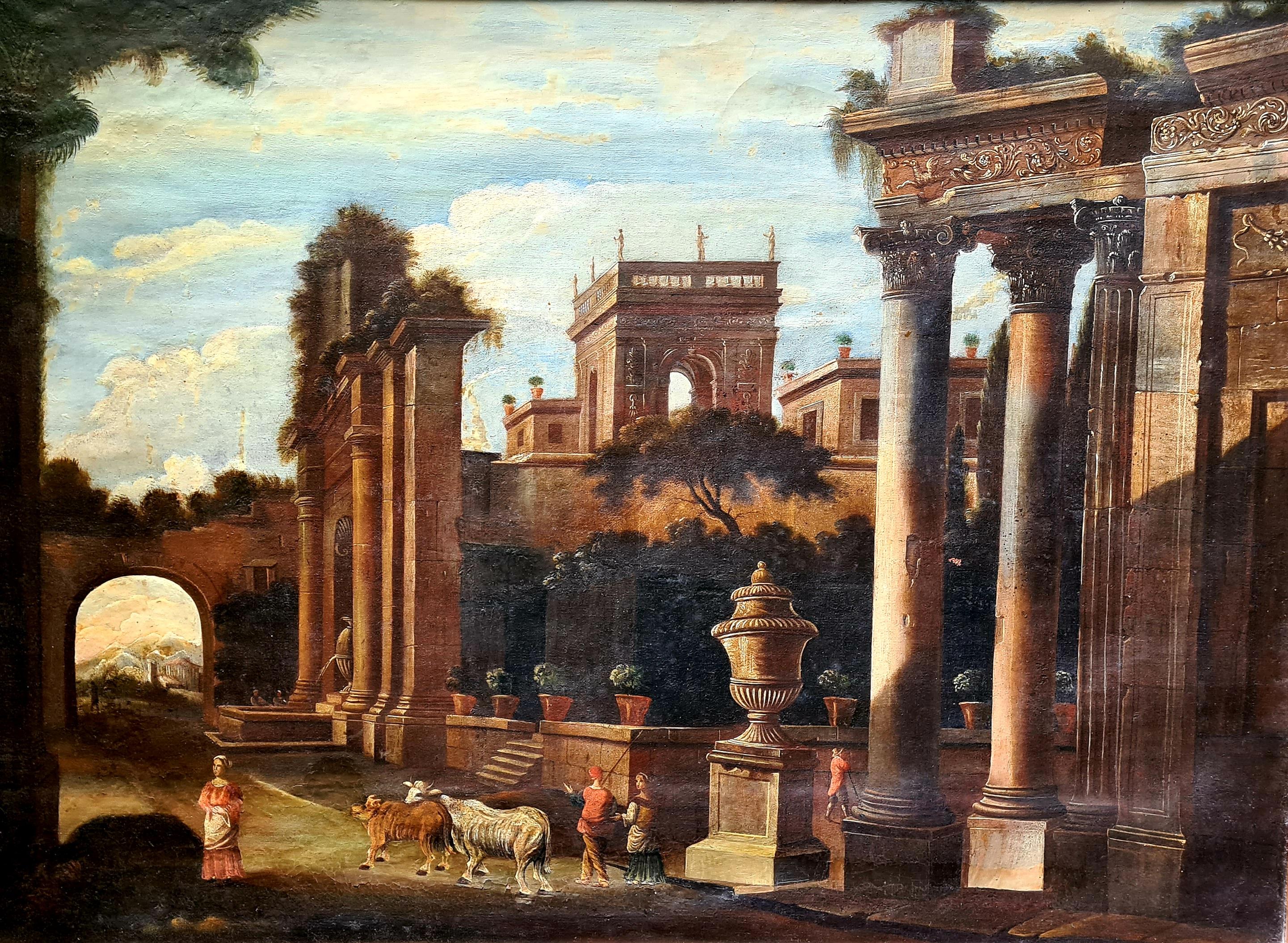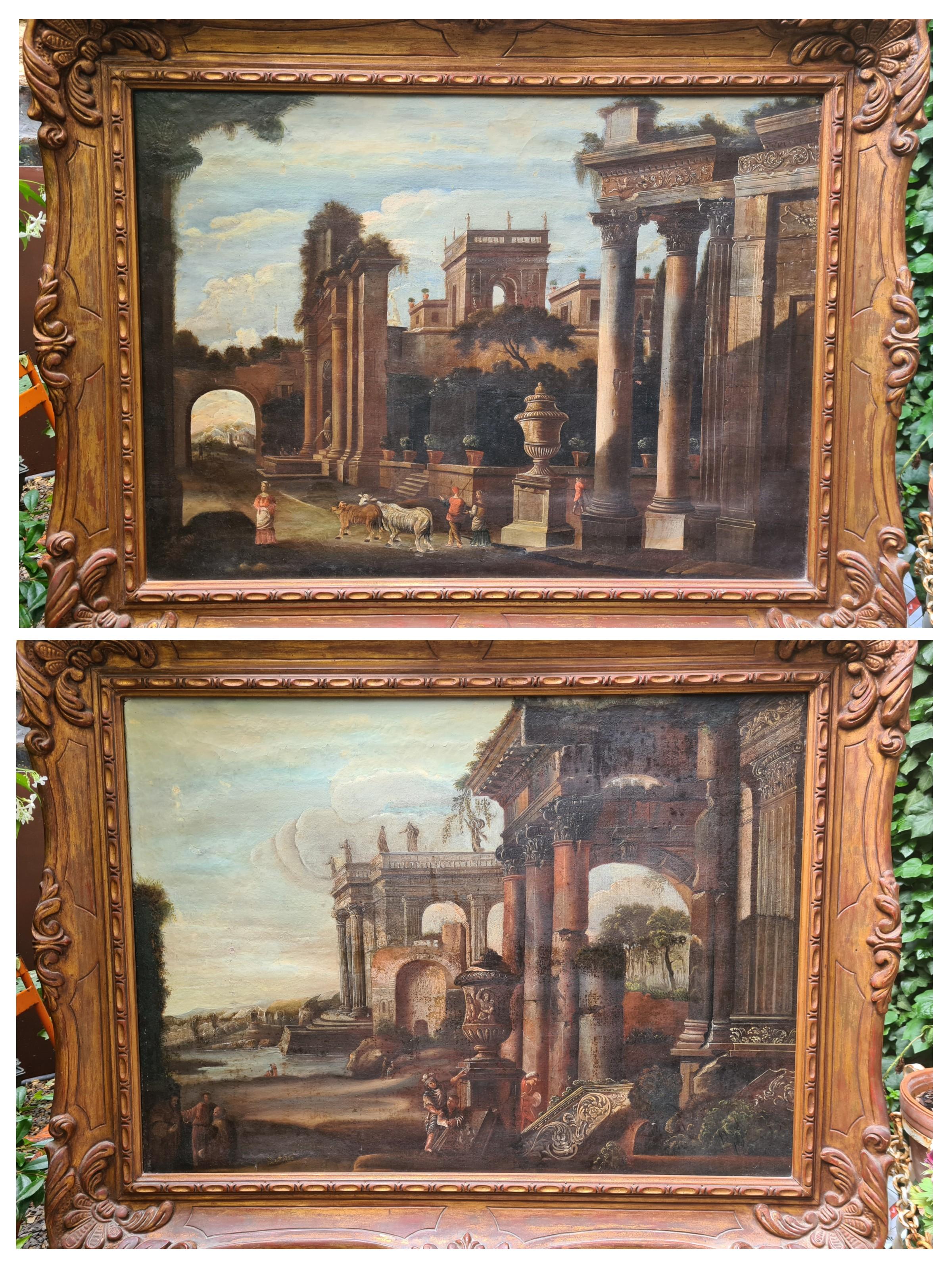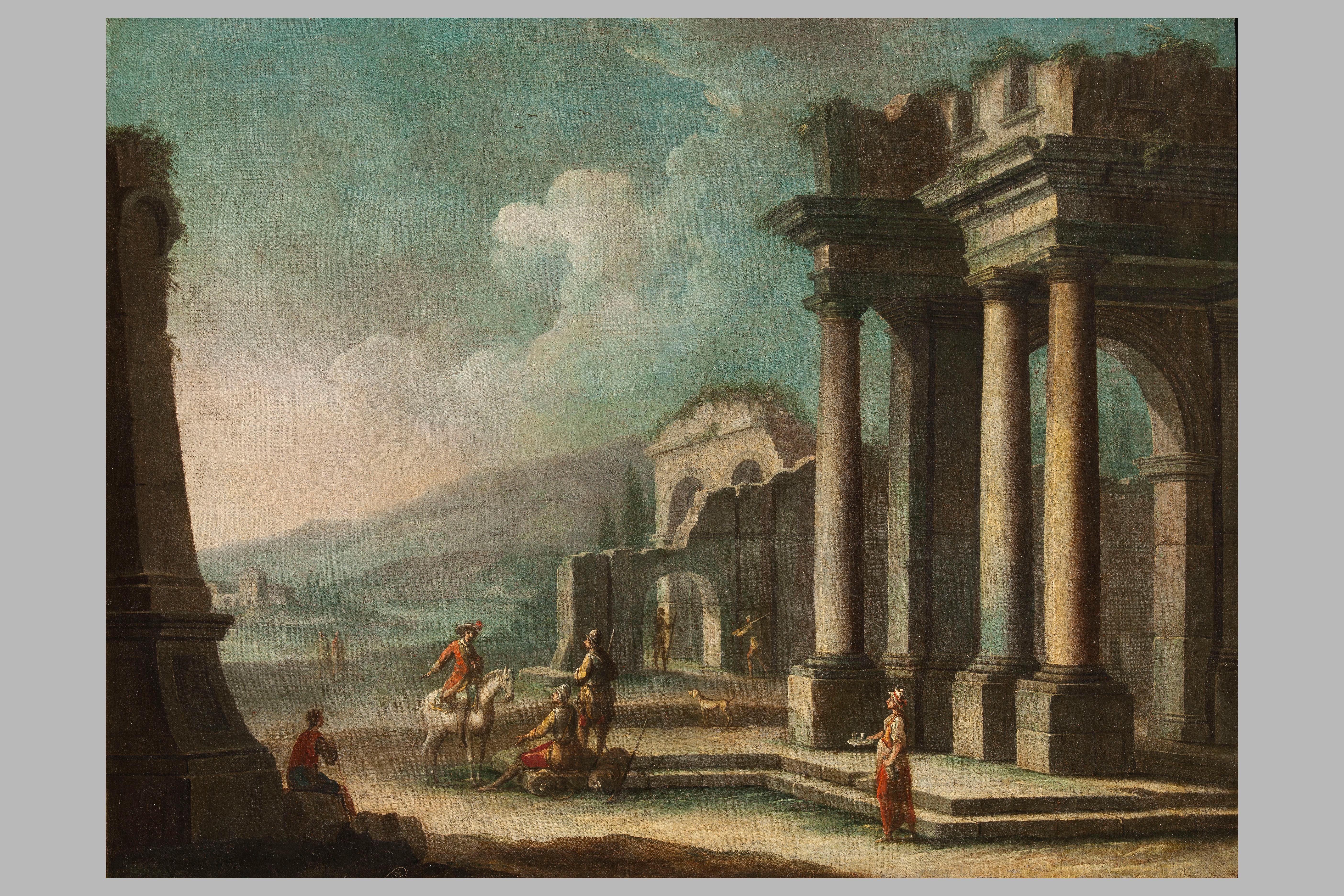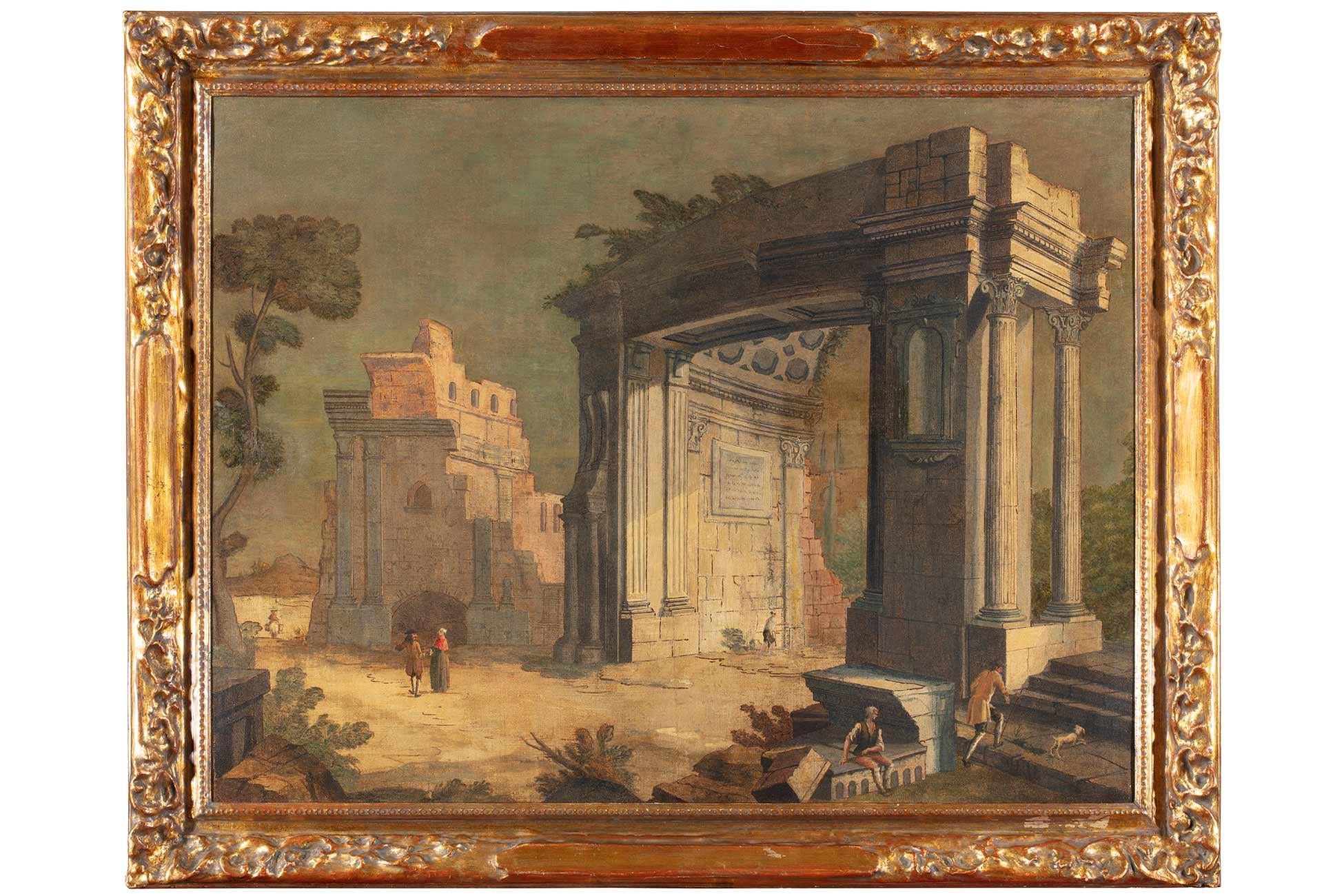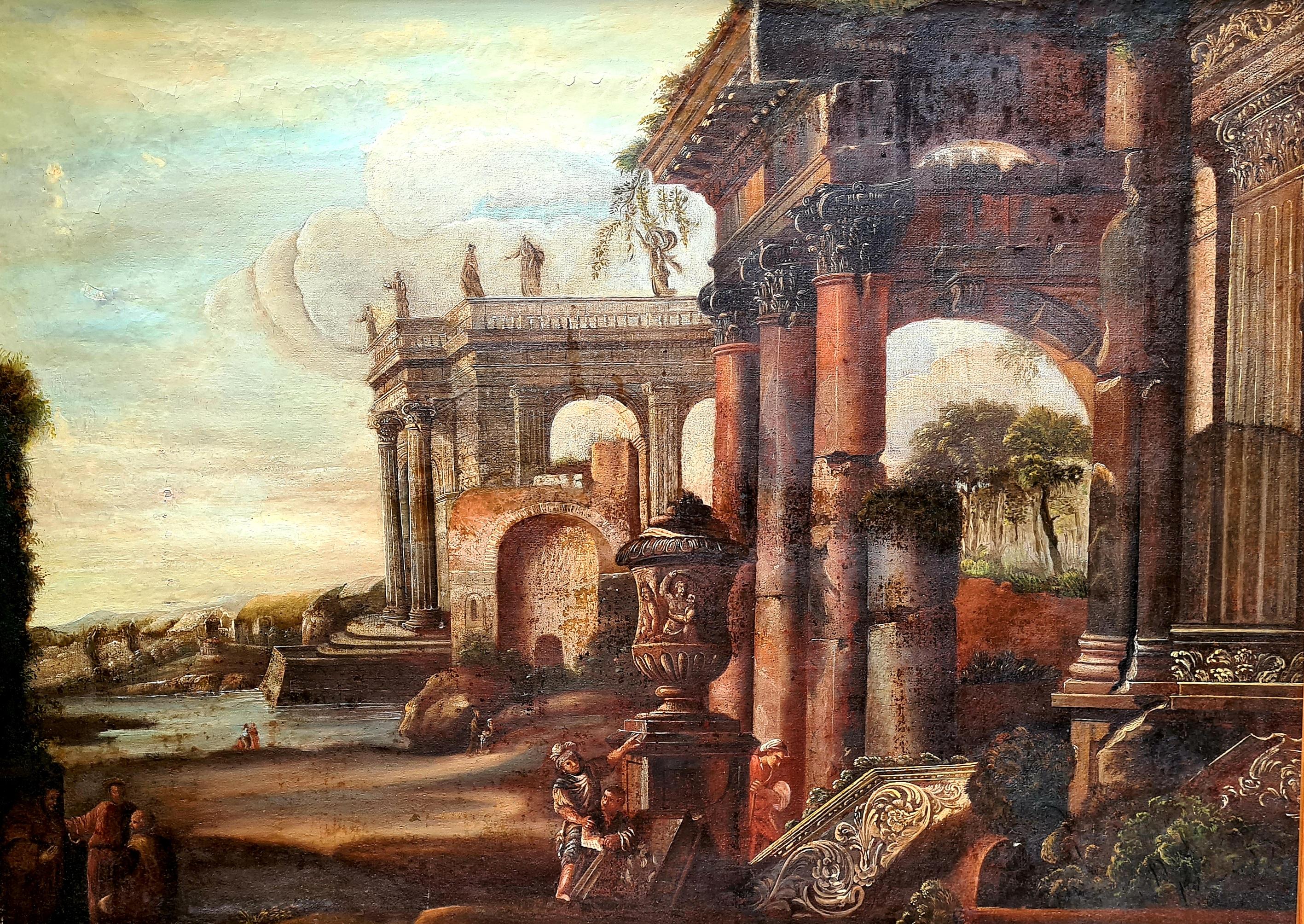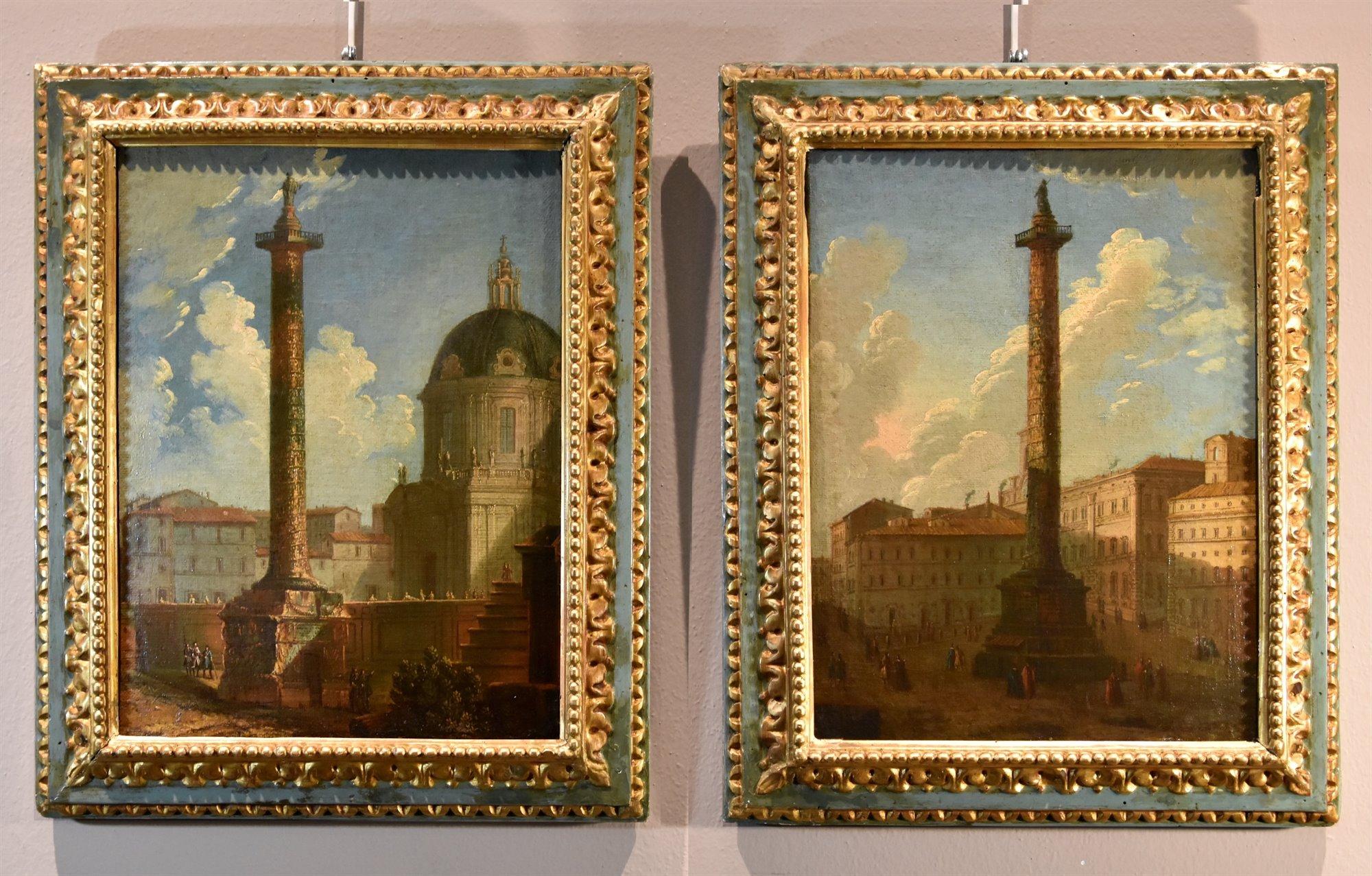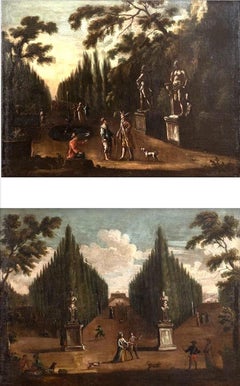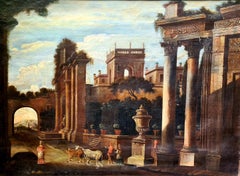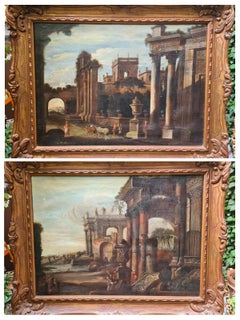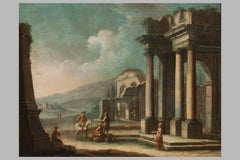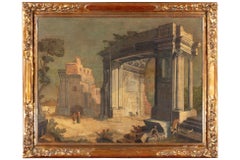Items Similar to Pair of Italian 18th Century Tempera on Canvas Classical Paintings "Capriccio"
Want more images or videos?
Request additional images or videos from the seller
1 of 8
Pair of Italian 18th Century Tempera on Canvas Classical Paintings "Capriccio"1720
1720
$78,272.11
£57,911.58
€65,000
CA$108,225.13
A$118,817.69
CHF 61,987.44
MX$1,437,859.46
NOK 776,916.37
SEK 732,059.48
DKK 494,911.82
About the Item
A fine pair of huge Italian 18' century Capriccio with Classical ruins, tempera oil on canvas .
Atr.Pietro Paltronieri, il Mirandolese (Mirandola 1673-1741 Bologna).
Measurements cm 254 x122
- Attributed to:Pietro Paltronieri (1673 - 1741, Italian)
- Creation Year:1720
- Dimensions:Height: 48.04 in (122 cm)Width: 100.01 in (254 cm)Depth: 2.37 in (6 cm)
- Medium:
- Movement & Style:
- Period:
- Condition:
- Gallery Location:Rome, IT
- Reference Number:1stDibs: LU1004116003312
About the Seller
5.0
Vetted Professional Seller
Every seller passes strict standards for authenticity and reliability
1stDibs seller since 2018
32 sales on 1stDibs
- ShippingRetrieving quote...Shipping from: Rome, Italy
- Return Policy
Authenticity Guarantee
In the unlikely event there’s an issue with an item’s authenticity, contact us within 1 year for a full refund. DetailsMoney-Back Guarantee
If your item is not as described, is damaged in transit, or does not arrive, contact us within 7 days for a full refund. Details24-Hour Cancellation
You have a 24-hour grace period in which to reconsider your purchase, with no questions asked.Vetted Professional Sellers
Our world-class sellers must adhere to strict standards for service and quality, maintaining the integrity of our listings.Price-Match Guarantee
If you find that a seller listed the same item for a lower price elsewhere, we’ll match it.Trusted Global Delivery
Our best-in-class carrier network provides specialized shipping options worldwide, including custom delivery.More From This Seller
View AllPair of Italian 18' century Paintings with Gardens
Located in Rome, IT
Pair of Italian 18' century paintings , oil on canvas with Venetian Palace gardens , antiques sculptures and various figures .
Measurements with f...
Category
Mid-18th Century Old Masters Landscape Paintings
Materials
Oil
Pair of Italian 18' century Paintings with Gardens
Located in Rome, IT
Pair of Italian 18' century paintings , oil on canvas with Venetian Palace gardens , antiques sculptures and various figures .
Measurements with frame cm 75 x101
Category
Mid-18th Century Old Masters Landscape Paintings
Materials
Oil
Pair of Italian 18' century Paintings with Gardens
Located in Rome, IT
Pair of Italian 18' century paintings , oil on canvas with Venetian Palace gardens , antiques sculptures and various figures .
Measurements with frame cm 75 x101
Category
Mid-18th Century Old Masters Landscape Paintings
Materials
Oil
Pair of Italian 18' century Paintings with Gardens
Located in Rome, IT
Pair of Italian 18' century paintings , oil on canvas with Venetian Palace gardens , antiques sculptures and various figures .
Measurements with frame cm 75 x101
Category
Mid-18th Century Old Masters Landscape Paintings
Materials
Oil
19th Century Roman Landscape oil on canvas with Giltwood Frame
Located in Rome, IT
Amaizing 19' century Roman landscape depicting a part of Villa Borghese with Trinità dei Monti.
With a finely carved gilt wood coeval frame.
Measurements with frame cm 65 x78 wit...
Category
19th Century Old Masters Landscape Paintings
Materials
Oil
19th Century Roman Landscape oil on canvas with Giltwood Frame
Located in Rome, IT
Amaizing 19' century Roman landscape depicting a part of Villa Borghese with Trinità dei Monti.
With a finely carved gilt wood coeval frame.
Measurements with frame cm 65 x78 wit...
Category
19th Century Old Masters Landscape Paintings
Materials
Oil
You May Also Like
Grand Tour 18th Century Veduta Capriccio Painting, After Gennaro Greco
Located in Cotignac, FR
A fine, large 18th century veduta capriccio scene with temple ruins after Gennaro Greco from the circle of Pietro Cappelli. The painting is presented in a more modern carved gilt woo...
Category
18th Century Baroque Landscape Paintings
Materials
Oil, Canvas
$9,094 Sale Price
20% Off
Pair of Grand Tour 18th Century Veduta Capriccio Paintings, After Gennaro Greco
Located in Cotignac, FR
A large pair of 18th century veduta capriccio scenes with temple ruins after Gennaro Greco from the circle of Pietro Cappelli. The paintings are presented in more modern carved gilt ...
Category
18th Century Baroque Landscape Paintings
Materials
Canvas, Oil
$15,172 Sale Price
30% Off
18th Century By Giovanni Domenico Gambone Pair of Capricci Oil on Canvas
Located in Milano, Lombardia
Giovanni Domenico Gambone (1720 - 1793)
Title: Pair of Capricci
Medium: Oil on canvas
Dimensions: without frame 85 x 112 cm - with frame 97 x 124 cm
The price is intended for the c...
Category
Mid-18th Century Old Masters Landscape Paintings
Materials
Oil, Canvas
18th Century by Antonio Stom Architectural Capriccio Oil on Canvas_
By Antonio Stom
Located in Milano, Lombardia
Antonio Stom (Venice, Italy, c. 1688 - 1734)
Title: Architectural Capriccio
Medium: Oil on canvas
Dimensions: without frame 88 x 113 cm - with frame 106 x 132 cm
Carved, sculpted and...
Category
Early 18th Century Old Masters Landscape Paintings
Materials
Canvas, Oil, Cotton Canvas
$19,266 Sale Price
28% Off
Large Grand Tour 18th Century Capriccio Painting Roman Ruins after Gennaro Greco
Located in Cotignac, FR
A fine, large 18th century veduta capriccio scene with temple ruins after Gennaro Greco from the circle of Pietro Cappelli. The painting is presented in a more modern carved gilt woo...
Category
18th Century Baroque Landscape Paintings
Materials
Oil, Canvas
$9,151 Sale Price
20% Off
Pair Views Rome Landscape Joli Paint 18yh Century OIl on canvas Old master Art
Located in Riva del Garda, IT
Antonio Joli (Modena, 1700 – Naples, 1777)
Pair of views of Rome
1. View of Rome with Trajan's Column and the Church of the Holy Name of Mary
2. View of Rome (Piazza Colonna) ...
Category
18th Century Old Masters Paintings
Materials
Oil
$9,392 Sale Price
20% Off
More Ways To Browse
18th Century Italian Paintings
Antique Classical Painting
Classical Ruins
Capriccio Painting
Italian Classical Paintings
18th Century Capriccio
Capriccio Painting Italy
Eugene Carriere
Evening Sunset Painting
Fall Leaves Painting
Gordon Barker
Guillaumin Armand
Hay Cart
Henry Hudson
Horse And Buggy
Ile Saint Louis
Italian Coast Paintings
J Allen
